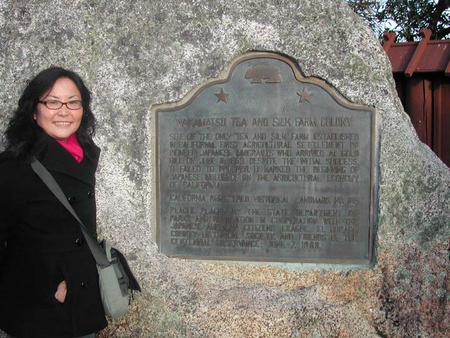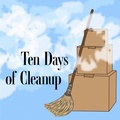For the past two days, Okei’s teeth chattered, all day and all night. It was as if a spirit had entered her body and she had no control over it.
“I don’t want to die here, Sakurai ojisan,” she said to her constant companion, Matsunosuke “Mats” Sakurai.
Both of them had joined the Veerkamp household after the Schnells had disappeared. Since Francis and Louisa had so many young children, Okei was supposed to help lighten the matriarch’s load. As it turned out, Okei fell seriously ill with a high fever, creating an additional burden for the family.
Mats, who worked as the household handyman, pressed a cold compress on the young woman’s forehead. “Don’t be silly. You’re not going to die.” He tried to keep his voice steady to hide his true emotions. “Think of something that made you happy.”
She remembered the wonder of Oshogatsu, the New Year’s season when the snow covered their huts and made them beautiful back in Northern Japan. The men in the village pounded mochi, steam emanating from the soft mounds of cooked sweet rice in a mortar.
She and the other children played with their okiagari koboshi, tiny papier mâché figurines in the shape of Buddhist priests. Painted in red or blue, the dolls were weighted so when they knocked them down, they would invariably bob up.
Okei shared her memories of the dolls and Mats nodded. Okiagari koboshi were common folk toys in the Fukushima area. He was familiar with them. When she finally relaxed enough to fall asleep, Mats crept downstairs to the kitchen and made some rice paste with some old rice and water.
He recalled the folk story of how a stray sparrow had started nibbling on an old woman’s rice paste, causing her to trim the bird’s tongue. “Suzume, here you go,” he challenged as he carried the paste in a bowl to a picnic table in front of the barn. He found some old newspapers and stones and got to work.
“Uncle Mats!”
“Uncle Mats!”
Two of the younger Veerkamp sons joined him at the table, watching curiously as Mats brushed strips of newspaper with the paste.
“We want to try!”
Mats helped them create their own papier mâché figurines. Their versions were a bit lopsided, but Mats assured them that once they dried and were painted, the dolls would look fine.
While they were making the koboshi, two former colonists—Kuninosuke “Kuni” Masumizu and Matsugoro Ohto—stopped by. They had been working to construct a hotel in Coloma when they learned about Okei’s illness.
“What does the doctor say?” Matsugoro asked after the Veerkamp boys had left the table to chase each other.
Mats shook his head. “We can’t get the fever to leave her.”
“Malaria?” Kuni asked.
“Probably.” Mats felt sick to his stomach.
The two men went to the house to visit with Okei, while Mats dried the koboshi in the sun. Within a few hours in the summer heat, the papier mâché had hardened enough for Mats to paint them white, the only color paint that he had in the barn.
He set them on a wooden board and went up to Okei’s room. She seemed even weaker than before but managed a smile when she saw the bobbing dolls on the board.
“They look like yukidaruma and not koboshi,” Mats apologized.
“No, I like them.” They reminded Okei of the snowmen that she used to make with her parents on winter days back in Aizu-Wakamatsu.
Mats set the board on a window seat where the koboshi wobbled. He sat beside Okei until she finally fell asleep.
* * * * *
She died the next day, three days after contracting her fever. The Veerkamps and former colonists held a memorial service for Okei on a hill overlooking a keyaki tree. Okei often stood there by herself and Mats wondered what the teenager was musing. She had the weight of many troubles on her thin body. Those troubles had finally broken her.
The Veerkamps had helped to pay for a simple pine casket. Mats felt ashamed that there was nothing to formally mark the grave. The younger sons placed their misshapen koboshi on the dirt covering her casket. It was a touching yet miserable site.
“I will pay for a headstone for Okei,” Mats announced out loud. “It will be grand. Everyone will know that a Japanese girl died here in 1871.”
Francis, Louisa, and the older Veerkamp sons exchanged glances. Mats was a mere handyman. And while they adored Okei, why in the world would anyone outside of the Veerkamp family care that such a girl existed?
* * * * *
Several years later, Matsugoro returned back to the Veerkamp household for a visit. He had spent months at the Fountain Grove Winery in Santa Rosa, California, training under Kanaye Nagasawa, a Japanese immigrant who was becoming a notable winemaker.
He now was a father with a newborn daughter, Sakuko. He was greeted warmly by Mats, who continued to be employed by the Veerkamps.
“Come, come,” Mats ushered Matsugoro out to a sloping hill. The area seemed familiar. And then Matsugoro remembered Okei’s funeral service.
There was a white gravestone placed in the ground. It was made of dazzling white marble and had English writing etched on one side and Japanese on the back. “In Memory of Okei,” it read. “Died 1871. Aged 19 Years. A Japanese Girl.”
Matsugoro was moved almost to tears. “Did you do this?”
Mats nodded. It took him a while to save the money but he was able to make good on his promise.
“Well done,” Matsugoro said. “Well done.”
THE END
* * * * *
*The author visited the site of the Wakamatsu Colony and Okei’s gravesite in 2011.
© 2020 Naomi Hirahara








